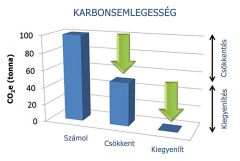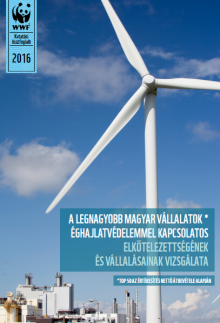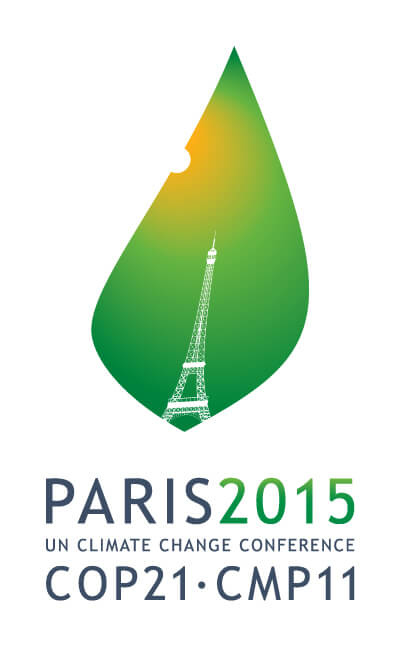The True Cost of Carbon Credits: Addressing the Underpricing Problem
The True Value of Carbon Credits: Why Aren’t We Paying the Real Cost of Our Emissions?
The carbon credit market is playing an increasingly significant role in global climate protection. However, due to current pricing mechanisms, the system is not fully achieving its intended purpose.
Carbon credits and emission quotas have become a focal point in sustainability discussions. Yet, current practices raise numerous issues that not only question the system’s efficiency but also challenge the fundamental principles of addressing the climate crisis. The price of carbon credits is artificially kept low through various seemingly scientific calculations, while the price of the European Union’s emission quotas (ETS) currently hovers around €70–80. The low price of carbon credits, the lack of recognition of the true social costs of emissions, and the risk of greenwashing raise serious concerns.
Below, I explain why the carbon credit system is not functioning efficiently and how this issue can be addressed.
The Price of Carbon Credits: Why Is It Too Low?
The price of carbon credits is currently significantly lower than the true social costs of emissions. Globally, the price of voluntary carbon credits averages between €8–10, while in the EU, it ranges from €15 to €75. The EU emission quotas (EUA) are around €70–80, and even with penalties, they only reach €140. However, even this price falls far short of the true social damage caused by emissions, which, according to scientific estimates, is $1,367 per ton of CO₂ (Source: NBER – The Macroeconomic Impact of Climate Change: Global vs. Local Temperature). This figure encompasses not only the economic impacts of climate change but also health, social, and environmental damages.
Why Is This a Problem?
Risk of Greenwashing
If companies purchase carbon credits at low prices without paying the true social costs of their emissions, this does not result in real emission reductions or true carbon neutrality. This is essentially greenwashing, as companies appear “green” while continuing to contribute to the climate crisis.
Underfunding of Sustainable Projects
The low price of carbon credits means that project owners receive less revenue. This slows the spread of sustainable technologies and practices, as these projects often come with high initial costs.
Lack of Incentive for Real Emission Reductions
The current system does not sufficiently incentivize real emission reductions and fails to reflect the true economic and social impact of emissions.
The True Cost of Emissions: Why Should It Be Recognized?
The social costs of emissions include not only the economic impacts of climate change but also health damages, agricultural losses, costs from rising sea levels, and many other factors. According to scientific estimates, the true social damage caused by emissions is $1,367 per ton of CO₂. If this figure is not acknowledged, current generations are effectively passing multiple costs of climate change onto future generations.
Why Is It Important to Highlight This Cost?
- More Informed Decision-Making: If companies and individuals are aware of the true costs of their emissions, they are more likely to make sustainable decisions.
- Fairer Market: Recognizing the true costs of emissions would allow carbon credit prices to reflect reality, thereby incentivizing emission reductions.
- Support for Sustainable Projects: Revenues from carbon credits should support the spread of sustainable technologies and projects. However, if revenues are only a fraction of what social damages justify, the transition to a sustainable economy will slow or become infeasible.
Proposals to Address the Problem
Increase the Price of Carbon Credits
The price of carbon credits should move closer to the true social costs of emissions. This would not only combat greenwashing but also incentivize companies to genuinely reduce emissions.
Expand Carbon Footprint Calculations
Carbon footprint calculations should include not only the quantity of emissions (in tCO₂eq) but also their social costs in monetary terms. This would allow companies and individuals to understand the true impact of their activities.
Increasing Market Transparency
The carbon credit market must become more transparent, ensuring that project owners and buyers understand the true value of carbon credits. This could include introducing independent verification mechanisms.
More Conscious Consumer Behavior
Consumers can also play a role in holding companies accountable for their emissions. Social pressure and informed purchasing decisions can encourage companies to adopt greener practices.
Why Expand Carbon Footprint Calculations to Include Social Costs?
Current carbon footprint calculations only show the quantity of emissions in tons of CO₂ equivalent (tCO₂eq) but do not account for their social and economic damages. This omission is not only misleading but also unethical, as it allows companies and individuals to avoid acknowledging and financing the true consequences of their emissions.
Why Is This Change Necessary?
- The Urgency of the Climate Crisis: The climate crisis is already causing significant damage, and the situation is worsening. Without change, future generations will face even more severe consequences.
- The Principle of Fairness: Recognizing the true costs of emissions is based on the principle of fairness. Those who pollute should pay the true cost of their emissions, rather than passing the burden onto society and future generations.
- Transforming Markets: Highlighting social costs would contribute to transforming markets, making sustainable products and services more competitive. This would drive innovation and the spread of green technologies.
Conclusion
The current carbon credit system falls short in addressing the challenges of the climate crisis. The low price of credits, the lack of recognition of the true costs of emissions, and the risk of greenwashing pose significant obstacles to creating a sustainable future. To achieve real change, the price of carbon credits must move closer to the true social costs of emissions, and the system must become more transparent and fair. Only then can we ensure that emission reductions are not just on paper but also in reality.
László A. Rampasek















